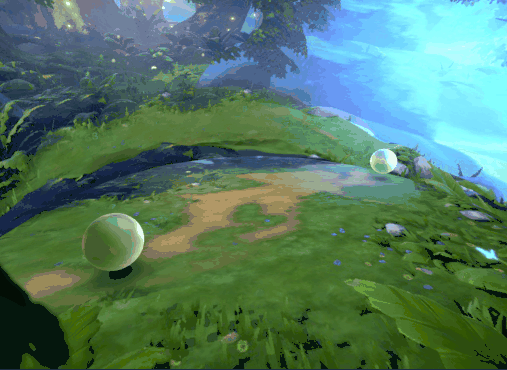Thank you everyone for your perspectives so far  I really appreciate the time and thoughtfulness put into each response and have gleaned some observations from them that I wanted to share back. Before I get into what those observations are I wanted to take a moment and highlight two topics that may benefit from some additional clarity: NDA’s and WHY a test might be given.
I really appreciate the time and thoughtfulness put into each response and have gleaned some observations from them that I wanted to share back. Before I get into what those observations are I wanted to take a moment and highlight two topics that may benefit from some additional clarity: NDA’s and WHY a test might be given.
The WHY of art tests. There could be a quite few reasons but predominantly it’s for the candidate and the company to:
- Evaluate where the craft competencies of the candidate are.
By craft competencies I mean: hue, value, cohesion, consistency, timing, creativity, readability, etc.It isn’t always easy to tell where someone lands especially if:
A. A reel is old
B. The consistency isn’t there between various FX
C. The context of FX in the reel don’t match the product’s needs
Note: This isn’t “Candidate didn’t meet senior level timing expectations, can’t hire them”. Everyone has gaps! EVERYONE. The information from the test helps the company gauge what a strong support plan looks like for that individual to level up those gaps. Sometimes there are too many gaps for the needs of the role OR the company cannot provide the right kind of support for that candidate resulting in a pass.
- Evaluate if the candidate enjoys working in that style
A test isn’t JUST for a companies benefit, it’s for yours too! This is a time to learn if working within this style is something you’d be passionate about for one, five, maybe fifteen years! It’s also a great method to demonstrate your most up to date skills. Not everyone can show the last thing they worked on quite yet so it’s great to have a means to flex those new skills.
NDA’s! Caveat - I am not a lawyer! I do not have extensive, detailed knowledge in this area so I encourage you to do your own research if you’re looking for more information. An NDA is a common accompaniment to a test because typically the candidate is working within an IP. I personally have never heard of VFX test assets used anywhere outside of the test. I hear you on that concern. That sounds like something to confirm with the company ahead of the test if it’s in question. Additionally if you are testing for an unreleased project there are likely to be stricter NDA rules to adhere to the confidential nature of RnD.
Now that we’ve talked a bit about WHY an art test might be asked and NDA’s:
I see there’s some polarizing perspectives around the possibility of the compensation aspect of art tests. It seems to stem from a desire to fairly compensate for the value of the artist’s time. There is a lot of nuance when it comes to monetarily compensating someone for their time. Contracts, work visas, currency exchange, budgets, and so so many other things ~ Because of this in all honesty I don’t see a silver bullet solution here.
Observations from this thread on what makes a great VFX Art Test:
- Transparency to candidate on what specifically they are being testing for
- Clear project descriptions of FX output including power level of effect
- Style indicators via existing reference or concept art
- Provide startup assets
- What would be helpful here?
- Basic scene setup
- Blueprint/sequencer/etc
- Basic shaders?
- Any textures you MUST have as part of the test
- Common textures, flash, glow, sparks, things that would be pulled from a common directory vs remade
- Flexibility on time
- Not a massive ask on individuals time
- Mindful of other obligations (work, home, or otherwise)
- Feedback
- Highlight what’s working
- Actionable, non abstract feedback
Again, thank you for all who have posted so far! You’re all helping to make a better experience for those who participate in the testing process. If I left anything out please let me know. I’d love to keep the discussion going if anyone has additional thoughts or would like to answer my original questions in the first post. Thanks buddies! 
![]()
![]()
![]()
